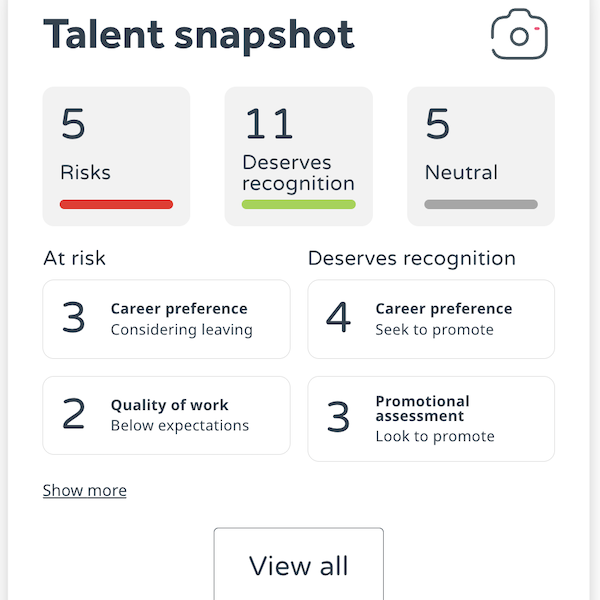Every business wants to be known as a great organisation to work for, but what are the components of employee engagement? And how do you make your employees feel special?
Business owners and managers have come up with all kinds of schemes and activities to prove they are ‘good employers’.
Employee delight schemes can include:
- An extra day’s holiday on birthdays
- Gym membership
- Friday drinks and/or a beer fridge
- Free fresh fruit
- A monthly massage
- Company days out
- A ‘proper’ coffee machine in the kitchen
- Table tennis or fussball in a breakout area
- A Christmas party
And many more quirky perks.
So, what is wrong with the above ideas?
Absolutely nothing! All of these can add to the employee experience (although Friday drinks can have the effect of excluding non-drinkers and those with family commitments).
But these perks should never be mistaken for a policy of employee engagement. Although they can certainly help make people feel valued and add to a sense of belonging, to be truly effective they must be part of an overall strategy. The fun stuff is just a small component of an organisation’s employee engagement.
Without incorporating all the components, the trips and perks are ultimately meaningless treats. In fact, without a serious engagement strategy, such treats can even be demotivating.
The Components of Employee Engagement
Wellbeing is a fundamental component of employee engagement
The first component of employee engagement is making sure you have the wellbeing of your employees at heart, both physically and mentally.
If your people are in poor health, there will be an inevitable impact on productivity. In 2019/2020, the estimated economic cost of poor health to Great Britain totalled £16.2 billion with 38.8 million working days lost.
Although the headline financial cost of days lost is quite staggering, this is just the tip of the iceberg. Generally, when people don’t feel 100%, they will still come into work, which may be fine if they are suffering from a few minor sniffles. However, if they are suffering over a long period, it is inevitable that motivation and productivity will decline.
Presenteeism (working when sick) adds further costs to business. Data from health insurer, Vitality, reveals that the UK economy lost almost £92 billion in 2019 (£91.9 billion) as a result of ill-health related absence and presenteeism in the workplace. Vitality’s report states that three quarters of this amount can be attributed to factors such as poor mental wellbeing and unhealthy lifestyle choices, which can be addressed by businesses through effective deployment of health and wellbeing programmes.
The absolute minimum starting point is ensuring the desks, chairs and equipment are fit for purpose and don’t cause back or posture problems.
Poor mental health is harder to identify. Employees who are stressed at work are more likely to be depressed, which in turn leads to lethargy and fatigue.
How do you assess the stress levels of your staff? You ask them. An employee survey is the most effective way to gauge the mental health of your team. Appointing Mental Health First Aiders will help to dissipate some of the stigma still attached to mental health.
Communication is an essential component of employee engagement

Communication isn’t a one-way street. Leaders and managers should listen to their teams, and always be ready to act on ideas and concerns.
Communication builds a community. If people feel they are being left in the dark or ignored, morale drops and false rumours can flourish. People appreciate openness and transparency and with this become more likely to buy into the business goals.
Leadership is another key component of employee engagement
According to a survey by recruitment firm Robert Half, almost half of professionals (49%) have quit a job because of a bad boss. As the old adage goes, people leave a manager not a business.
Leadership is about being accountable, knowing your team, listening, motivating and setting good examples.
Andrew Heath, Co-Founder of WeThrive, has authored a blog offering seven tips to becoming a great manager. In brief, he believes leaders should:
- Listen and act
- Ask for feedback and offer one-to-one sessions
- Lead by example
- Set achievable goals
- Be consistent
- Don’t micro-manage
- Say thank you
Personal And Professional Development matters to most people
Admittedly, some people just want to go into work, do their job and get paid at the end of the month. Many others want to feel they are progressing and learning.
Do you actually know if your employees are ambitious and want to be challenged? Or do they prefer to stay in their comfort zone? And if so, why? Regular employee surveys can help you understand the motivations and aims of your team.
The opportunity to develop new skills and capabilities is critically important to ambitious employees. A structured training plan is crucial for personal and professional development.
Mentoring should also be considered. As well as helping develop skills, a mentor can nurture your employees and make them feel that they are valued.
If you don’t show an interest in your people, how can you expect them to be interested in the business?
Feedback is important for employee engagement
Feedback is part of the communications strategy and important in leadership, but it deserves its own category, to underline its importance.
Open, honest feedback is a key component of employee engagement. It’s required to identify processes and strategies that improve working conditions, and it needs to be ongoing. It is not sufficient to wait until an annual review before asking for feedback.
Feedback has to be honest, so employees need to feel safe, without fear of recrimination, when they offer candid views.
Regular employee surveys are powerful tools when asking for authentic feedback. Although surveys tend not to be anonymous when working out individual training and development needs, anonymising the feedback element of a survey may be a consideration.
Work environment impacts employee engagement

Millions of people have been working away from the office due to Covid-19 lockdowns. Now they are returning, are employees at undue risk of contracting the virus? An office or workplace should be well-ventilated, spotlessly clean and be set up to allow social distancing for those employees who do not feel comfortable returning to public spaces.
Aside from concerns about the virus itself, many people have enjoyed the freedom of working from home and are no longer prepared to put up with noisy and soulless offices. With the advent of hybrid working models, the role of the office is now under scrutiny like never before.
“People want to come back to something better,” says Rob Day, CEO of BluePrint Interiors.“We don’t want ‘battery farm offices’ with the workers pecking away at their keyboards like distressed chickens. We believe in free-range human beings.”
Summary
Building a culture where employees feel engaged and motivated is not an easy fix. It requires a commitment from the organisation’s leaders and managers.
Offering perks and treats is a nice thing to do and should always be encouraged. But a positive culture can only be enhanced by embracing all the components of employee engagement.
An organisation’s culture needs to be based on clear communication, a commitment to listening to everyone in the business and acting on their ideas, empathetic and inspirational leadership, a genuine concern for the wellbeing of all and investing in a people-first physical environment.
These are the essential building blocks for any organisation that truly believes in its people.
How engaged are your people? How do they feel about their employee experience? Ask the right questions with WeThrive.

